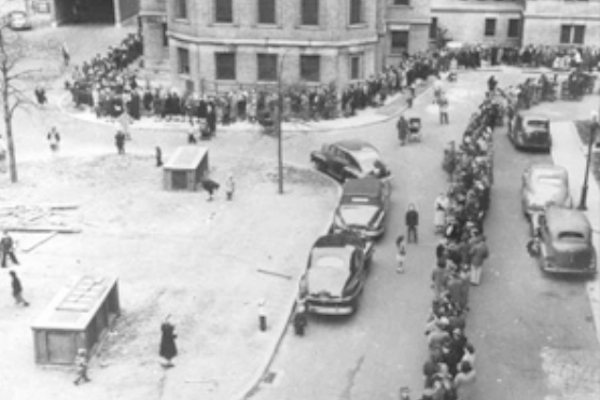
Photo by: NIH
New Yorkers lined up for the smallpox vaccine in ’47.
Terrors like ebola can seem like byproducts of the era of globalization, but they’re nothing new in New York City.
Not only has ebola been on the city’s radar screen for nearly 20 years—there was a scare in the Bronx in 1996—but the city’s epic 1947 campaign to prevent a smallpox outbreak indicates that disease threats can come on buses as well as airplanes and that aggressive public health efforts can squelch even the most frightening epidemic.
In March of 1947, a person who’d recently visited Mexico came to New York by bus, was hospitalized and died of smallpox, according to a history of the episode by the U.S. Centers for Disease Control and Prevention. Then a second and third case emerged, and the city called for all its residents to be vaccinated. Free clinics were set up. In the first week, 600,000 people got the shot. While estimates are all over the map, it appears that at least 2.5 million and perhaps as many as 4.4 million people got the vaccine over the course of a couple weeks.
That was, of course, a different era, when public-health risks probably seemed a little more immediate; it would be seven years before the polio vaccine was tested on any scale. Today, the infrastructure that maintains public is more subtle. The city’s Department of Health and Mental Hygiene, for instance, tracks emergency room data, monitors health indicators at several “sentinel” nursing homes, gets reports on samples sent to city laboratories and gets data on the sale of anti-diahhreal medication at drug stories in the five boroughs—all as a way of detecting the presence of giardiasis and cryptosporidiosis in the water supply (see pages 9 through 13 here).








